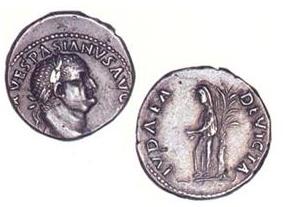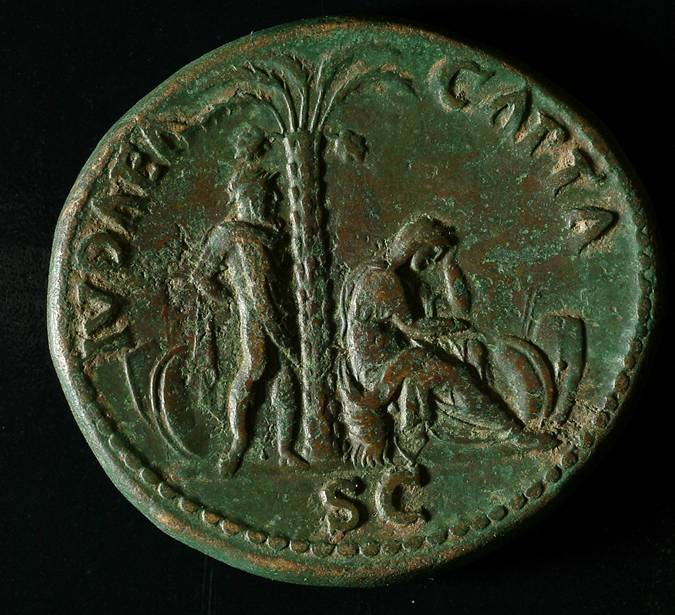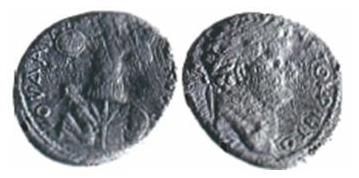Judea Capta Coins, 70 CE
So proud were the Romans of their suppression of the First Jewish Revolt (66–70 C.E.) that for 50 years afterward they issued coins commemorating their victory, the Judea Devicta and Judea Capta coins. The obverse of the silver Judea Devicta coin depicts Emperor Vespasian (69–96 C.E.), who claimed victory over most of Judea in 68 C.E. The reverse shows a female personification of Judea defeated. She stands with her head bowed and her arms tied.
Material- Bronze
Denomination- Sestertius
Size- 7/10 inch in diameter
The First Jewish Revolt was largely crushed by the Roman army under the leadership of Vespasian, who served first as the Roman commander in Judea and then as emperor from 69 to 79 C.E. Beginning in his first year as emperor, Vespasian minted a series of victory coins; among these is the first coin to bear the word Judaea in the legend. (The coin shown here was struck in 71 C.E.) Vespasian’s bronze sestertius (a quarter of a denarius) bears a portrait of the laurel-wreathed emperor with the Latin legend “Imp[erator] Caes[ar] Vespas[ia]n Aug[ustus],” “Leader Caesar Vespasian Augustus” (the last word is a title meaning “revered”). On the other side is a haunting picture of a Roman soldier dominating a captive woman slumped beside a palm tree. She is a personification of Judea, which was once again subservient to Rome. Vespasian’s son Titus (emperor from 79–81 C.E.) completed his father’s campaign, laying waste to the Jerusalem Temple in 70 C.E..
“Where the Temple Tax Was Buried,” BAR, Nov-Dec 1993.
“Spending Your Way Through Jewish History,” BAR May-Jun 2003.
Titus and Judea Capta Coin
Mazar, Eilat, The Complete Guide to the Temple Mount Excavations, Shoham Academic Research and Publication, Jerusalem, 2002, p. 27
See also:
- A Judea Capta coin, minted by the Romans portraying Vespasian the Roman commander of the northern campaign during the First Jewish Revolt and Roman emperor, ruled 69-79 CE, (front).
- A Judea Capta coin, minted by the Romans portraying Judea weeping under a palm tree symbolizing the Roman victory in the First Jewish Revolt (reverse).







